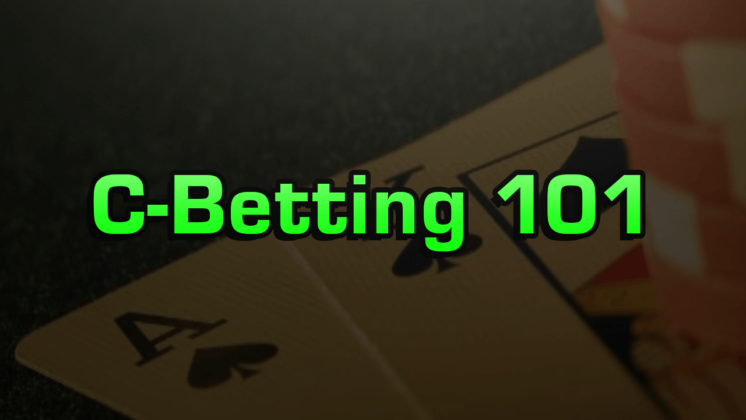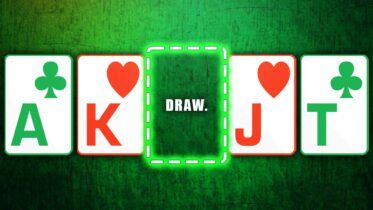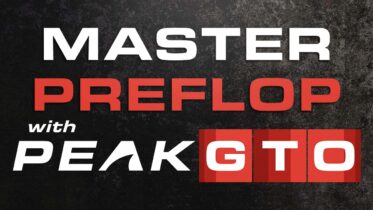Continuation betting (or c-betting) is one of the core fundamentals of No-Limit Hold’em. It is however one of the most misunderstood aspects of the game. Many players simply do not understand the reason for the continuation betting or why they would want or not want to do so. There are certain properties that are present when a highly profitable c-bet is presented. I find that a lot of players use the c-bet as a crutch to justify any flop bet while ignoring the theory behind why they would want to bet the flop in the first place. Today, we will discuss equity and range composition and how it relates to betting, sizes and frequencies, and some quick rules you can implement instantly in your game.
Calculating Equity
Equity is the backbone behind all decisions we make in poker. There are many equity calculators available (I use Power Equilab) to analyze range versus range equity. The more equity your range has, the more often you can continuation bet. The closer to even the equities run, the less often you get to bet. There are some more nuances and this isn’t the be all end all, but this is the backbone of betting in poker.
Let’s take an example: You raise from middle position (MP) and the big blind (BB) calls. From middle position you raise with a 18% range or something like this:
The BB calls, the flop comes down Kd-8c-4c. Who has the equity advantage and how large is that advantage?
The MP player has a 61% equity advantage, which is pretty substantial. The reason the advantage is so large has to do with range composition. MP’s range is fairly tight and composed around fairly strong preflop holdings. The BB is defending with a very wide range because of the price he is presented preflop, thus BB calls with a lot of weak holds such as 95s, T3s etc. The BB simply has nothing A LOT of the time. The BB simply has too many hands that have extremely low equity in his range. His worst hands are hands such as T3 spades, Q2 hearts etc, their hands have nothing going for them. The MP has a lot of hands with nothing as well, but MP’s nothing hands are still relatively strong. For example, MP has T9 spades, one of his weakest equity holdings, but still has 28% equity. T9 spades still has 2 over cards to 2nd pair and a back door straight draw. The BB’s weakest equity holding is 92 spades which only has 10% equity, basically just a single over card.
What does this mean? MP gets to bet and he gets to bet often! How often? I would consider this a pure C-Bet for the MP for 33%. What I mean is I would bet 33% of the pot with every single hand in MP’s range. This is the power of equity. When we have super high equity- 60% +, we want to bet often and for a small size. When we have poor equity (close to 50/50), we don’t want to bet often, but will use a large sizing when we do, this is often called a polarized betting strategy.
Rule #1 – High equity = frequent small bet sizing i.e. bet often for small %
Rule #2 – Average Equity = Less frequent betting for larger sizing i.e. Polarized betting.
Incorporating Position
How do positions affect the equity? Let’s take the same flop but change the positions and range accordingly. Let say the button raises 45% of hands and the BB defends a similar range. What happens to the equities on the same Kd 8c 4c board? The equities run much closer than before. Button only has 54% equity now instead of 61% in the previous calculation. Why less equity? Button has expanded his range over 2x from 18% of hands to 45% of hands. Thus, the Button has much more nothing in his range that whiffs this board. For example, Button has hands such as 96 hearts and A3o that don’t have much going for them here. 53 of diamonds happens to be one of the lowest equity hands for the button. Now with equity around 54%, according to PioSolver, the Button only wants to c-bet around 66% of time compared to 100% earlier when we had 61%. This displays the relationship between equity and betting frequencies.
In summary, betting frequencies are largely tied to equity. It is the equity that allows you to bet, not the fact that you raised preflop. For example, if you raise UTG and UTG + 1 flats, there are many boards you will have 0 betting frequency, as UTG +1 is flatting such a tight defined range and will have almost no misses on many boards. UTG +1 will almost always have an equity advantage plus position in the hand. A good homework assignment is to get an equity calculator such as Equilab. Start with MP v BB and input the ranges and generate random flops (this is done in the app). Before running the calculator, guess the equities of each range, then start doing Button vs BB ranges, EP v Button flat call ranges etc. The goal is to get better at defining equity advantages and how big that advantage is, which will greatly increase your post flop play!



